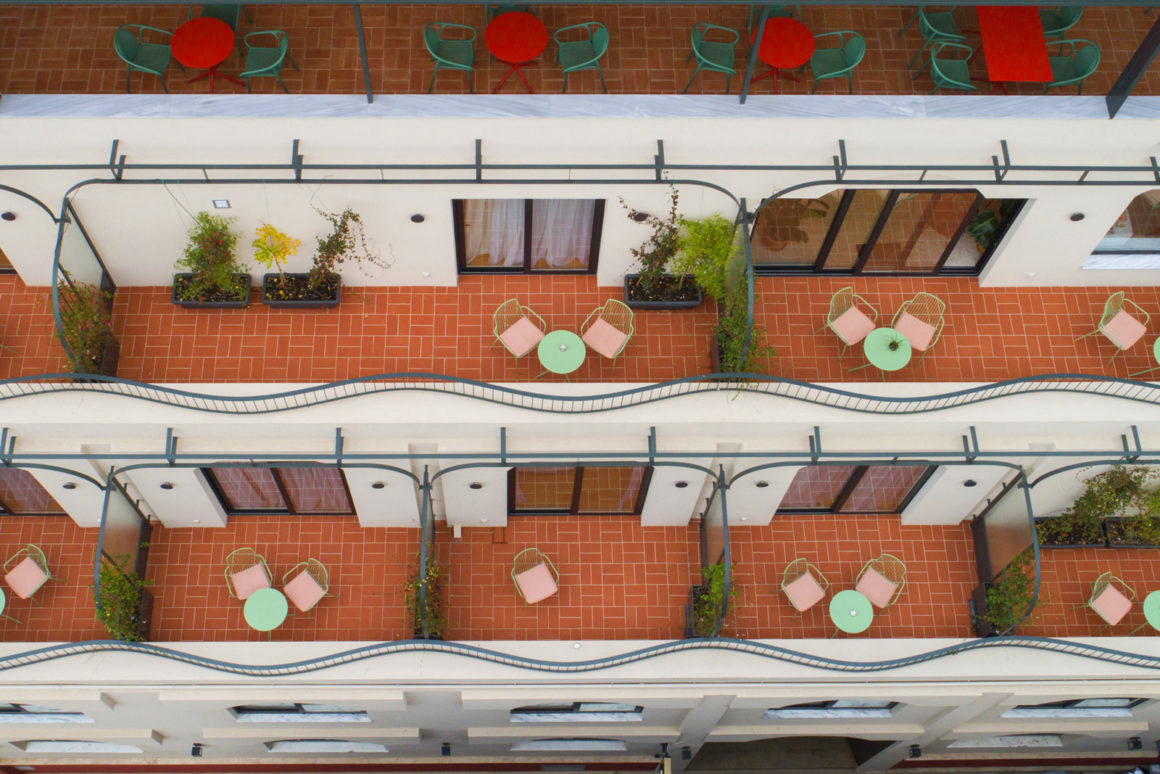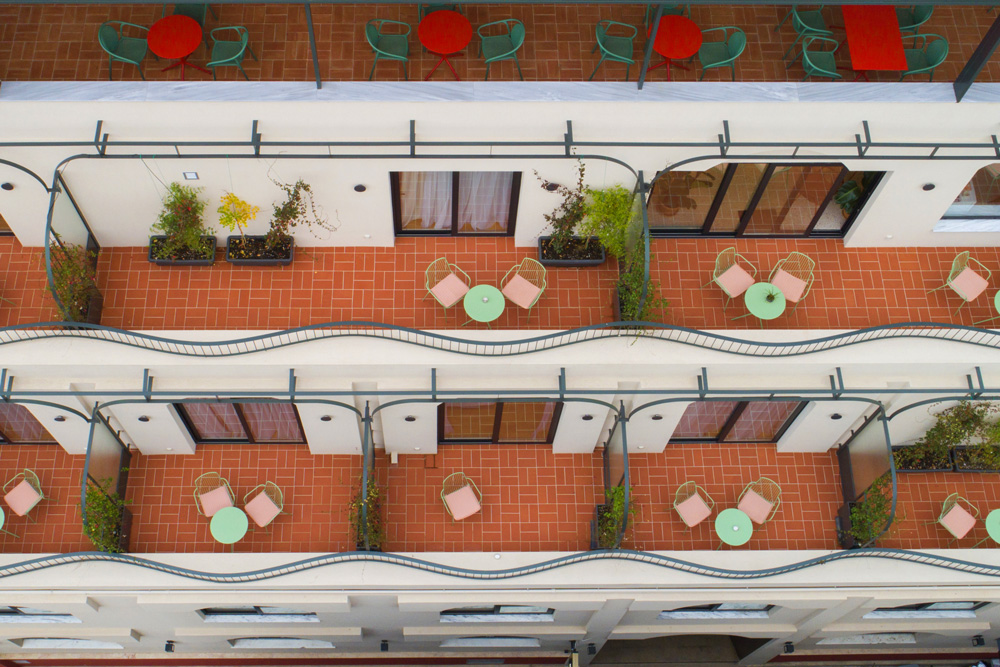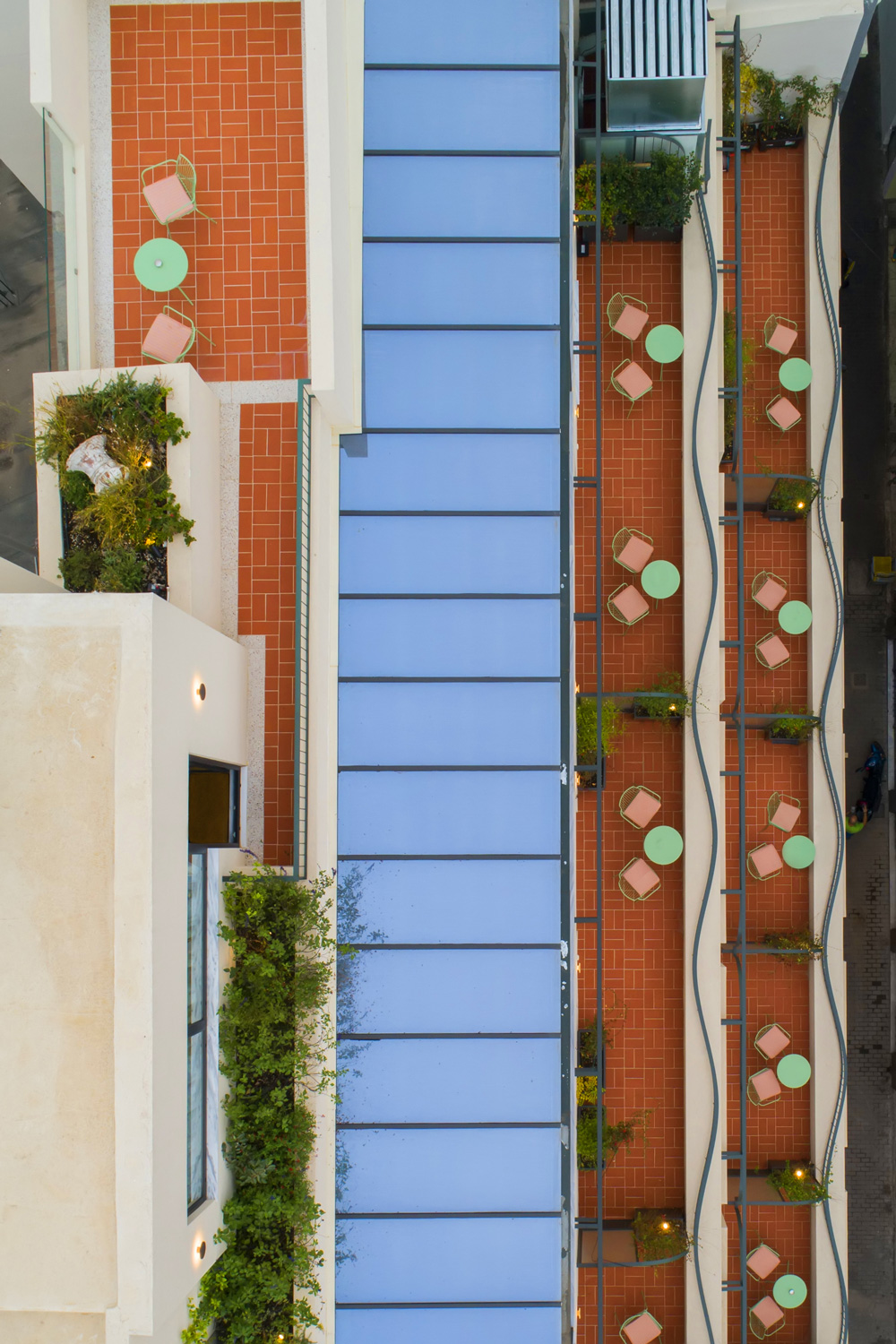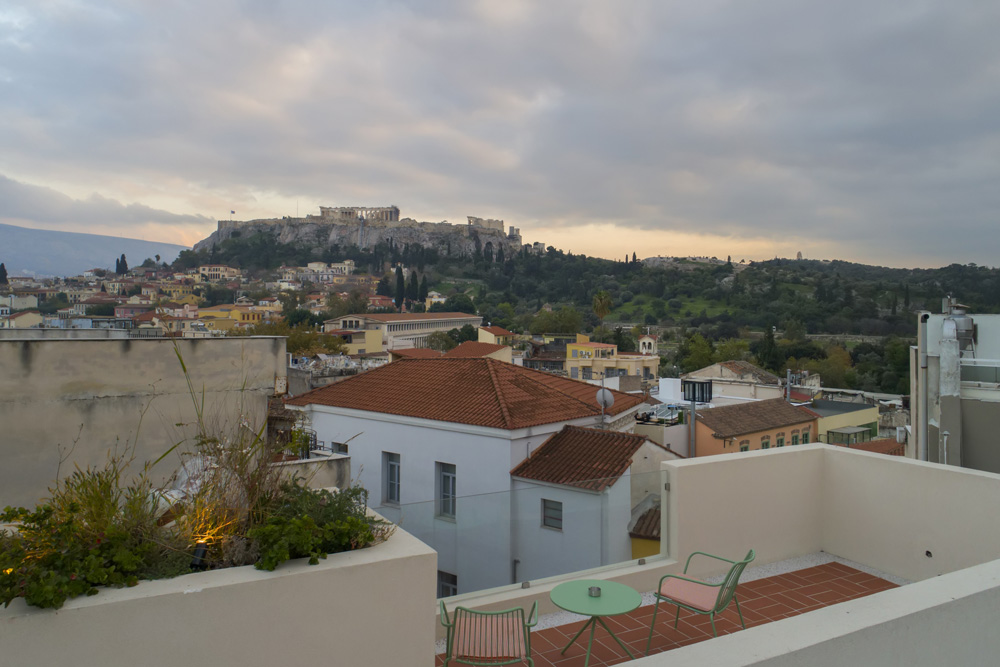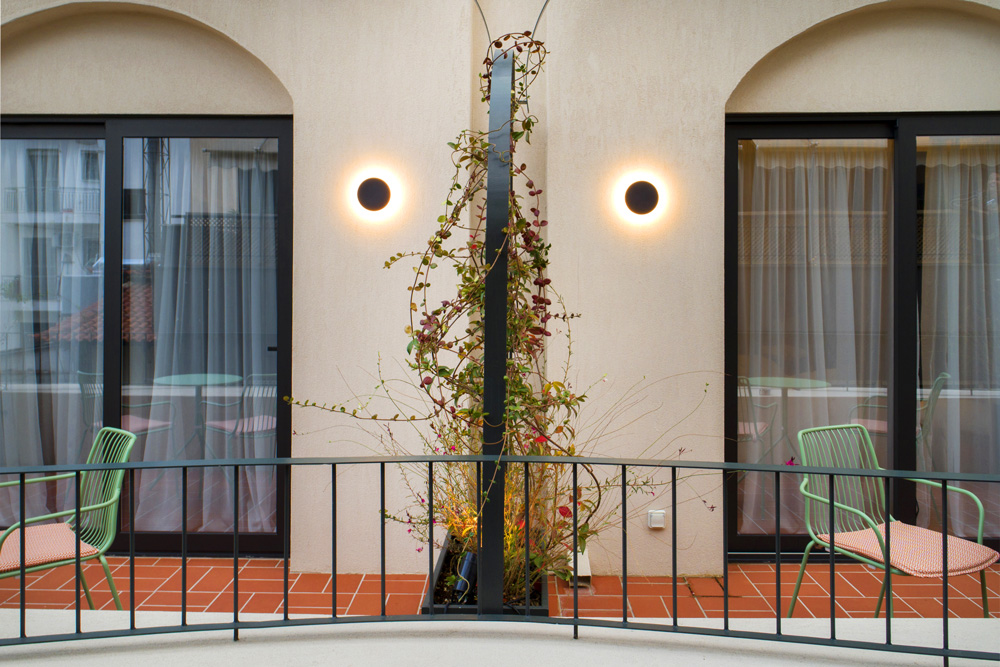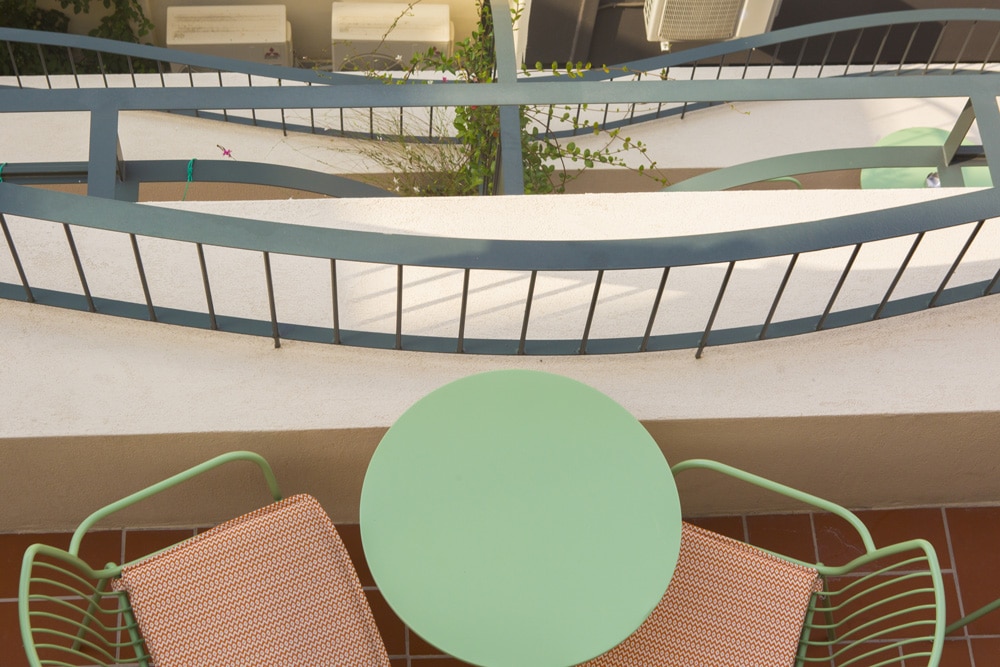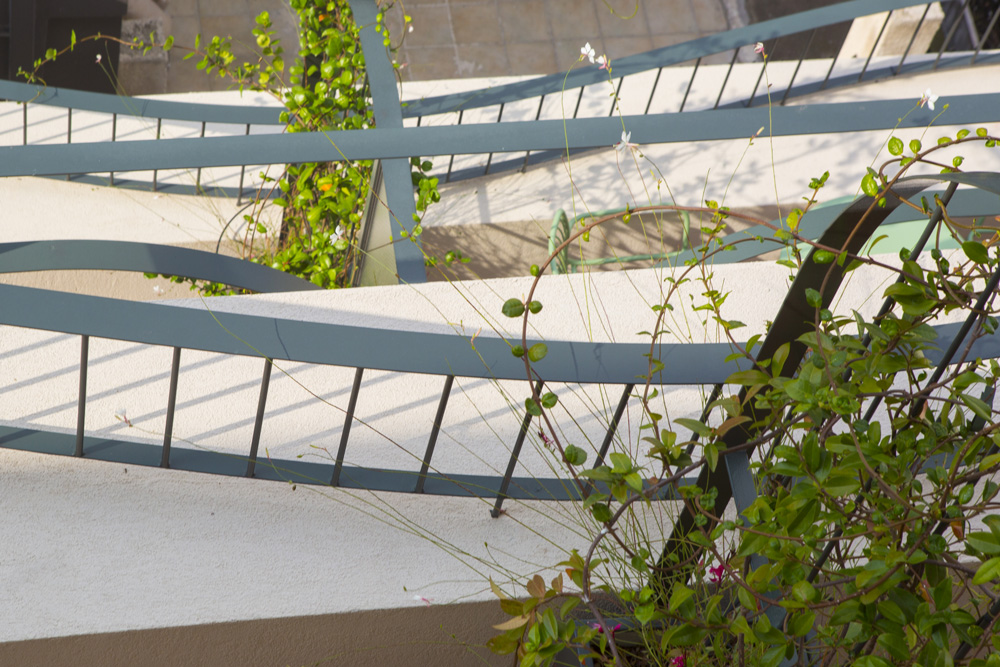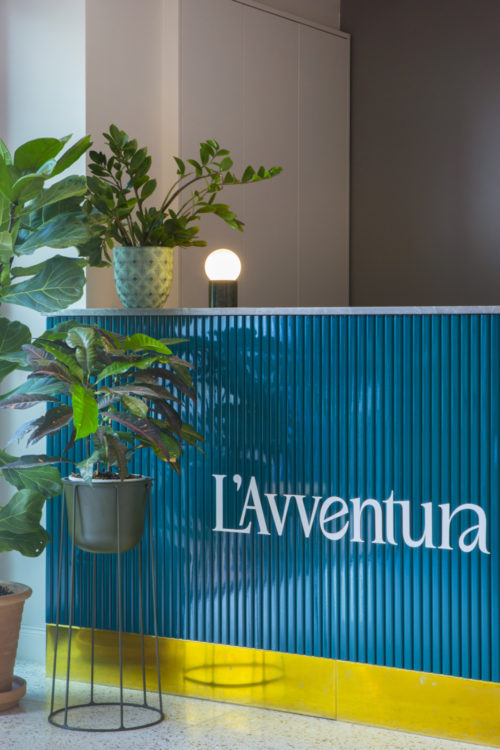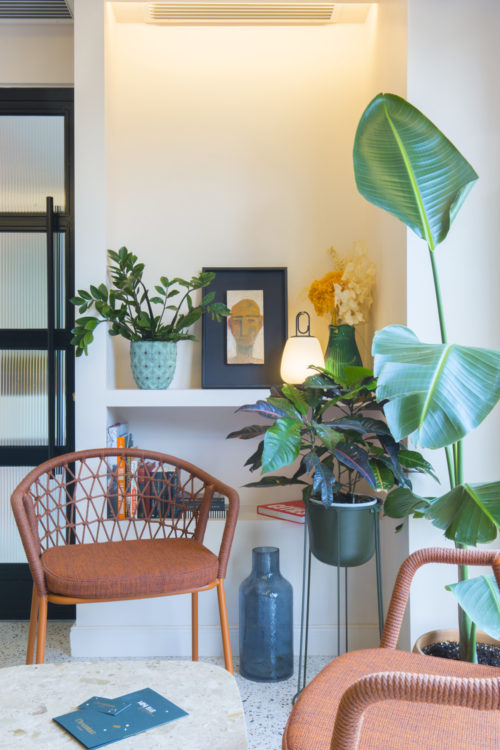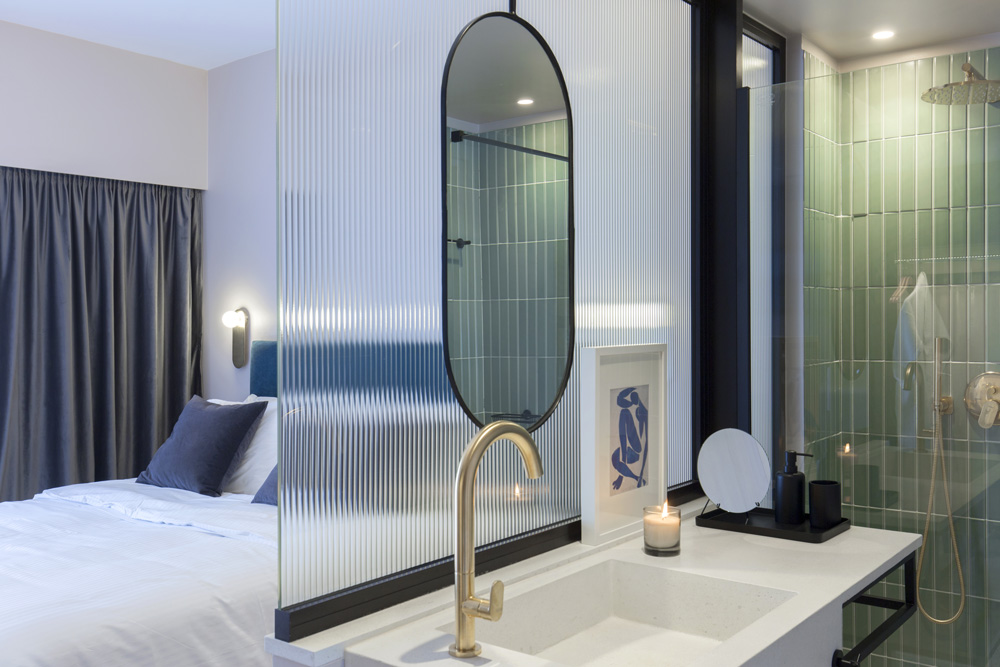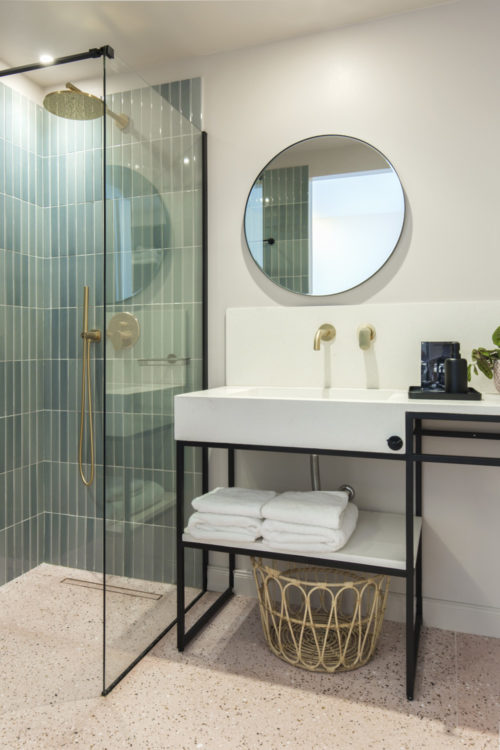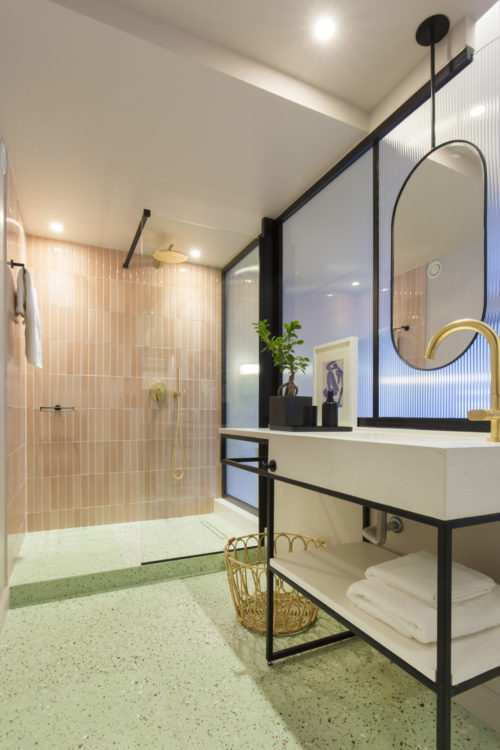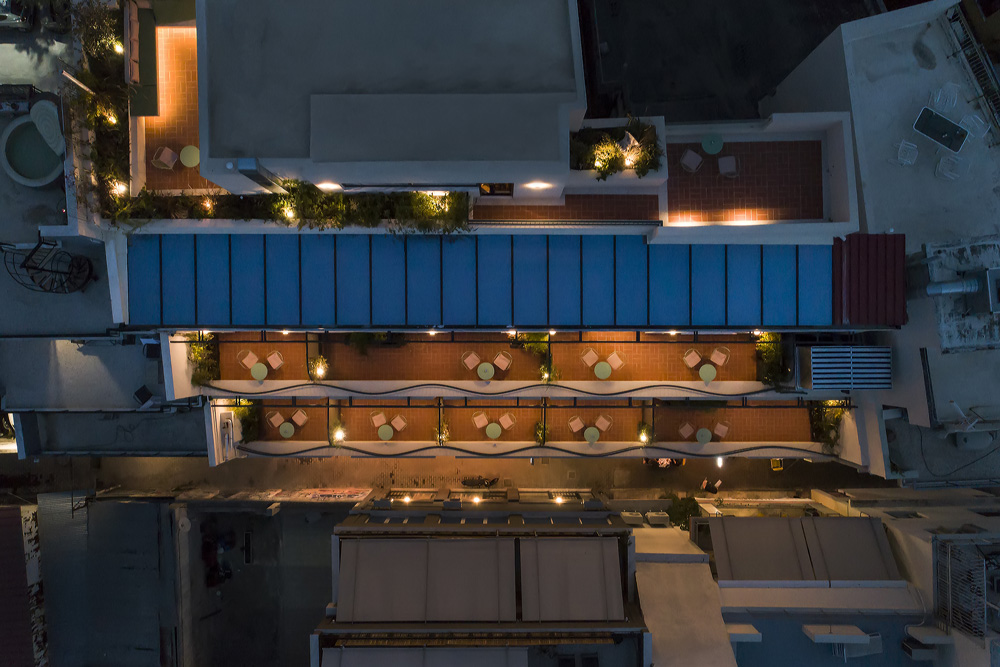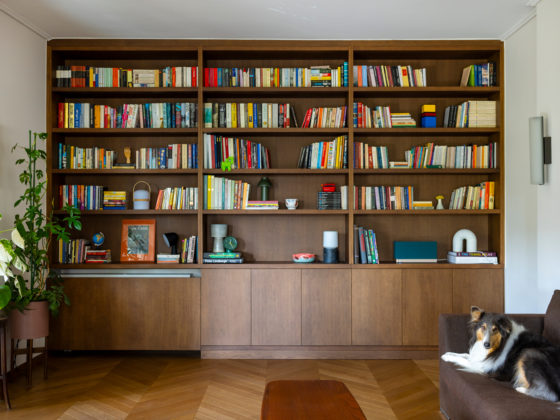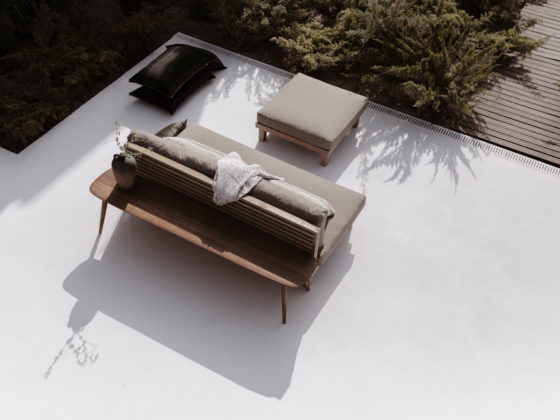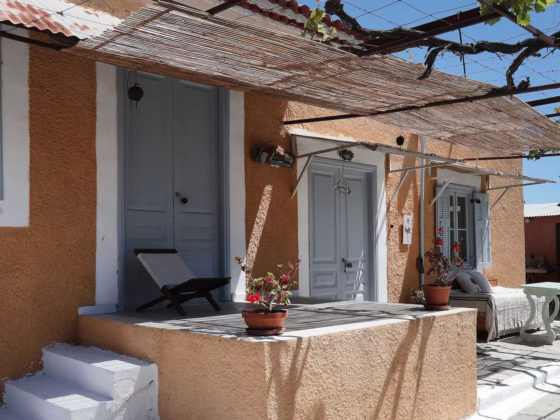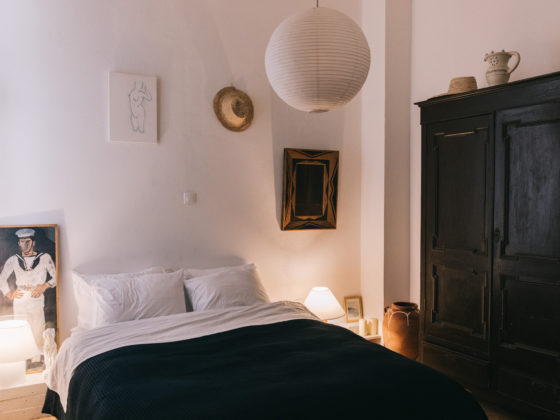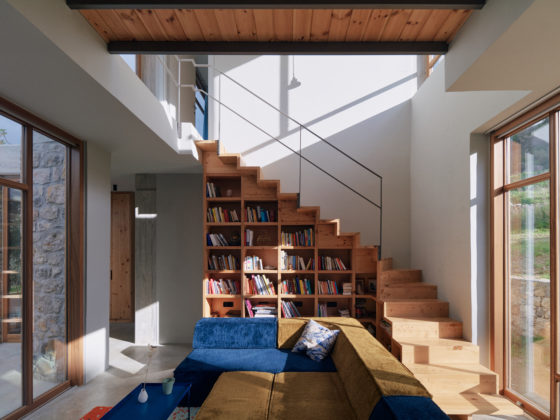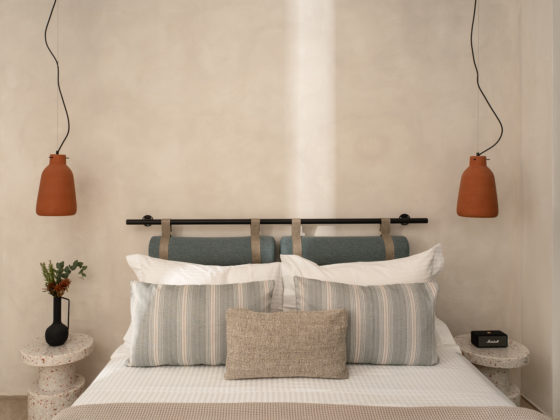L’avventura hotel is located on a pedestrian street 2.5m wide, in the Psiri area in the center of Athens. The existing building, originally built in 1979, consists of a ground floor, 4 levels, and a roof, which due to the particularly narrow width of Auliton Street, retreat from the boundary of the pedestrian street and are developed in three recesses.
“The renovation of the existing building has been extremely challenging, as the ground floor has been occupied by a wellness and spa center, while the 4 upper levels were abandoned for years. At the same time, the façade of the building had been modified over the years by later additions and changes of use, and elements with a strong decorative character had been added that did not fit with the style of the building but also with the historical center that adjoins. Having in mind the character of the building, the surroundings, and the new hotel use, our proposal focused on the restoration and the redesign of the façade and consequently on a new layout of 25 rooms, a reception, and a leisure-café area.
Externally, all the decoration was removed, and the building was repainted at a bright beige color. All the frames were replaced with new aluminum frames that meet the specifications for hotel rooms, and in the third recess, a new metal construction was designed that defines and houses the café-restaurant area. At this new and simple façade we looked for a delicate structure that would connect in a way the 3 levels, and at the same time would isolate each room at the level of the terrace. So, we designed at the façade a “grid” of thin metal profiles in straight and curved forms over the frames, combined with the metal and semi-transparent glass partitions between the rooms. Furthermore, a thin metal railing consisting of bars runs in a curved shape above the terrace’s low wall, creating nests for the sitting area. Metal planters with climbing plants on the balconies, add the element of green, composing a “green” grid of separation and partial shading.
Following a structural reinforcement and an extensive reconstruction process, the proposal focused on the design of 24 rooms, a suite at the upper terrace with Acropolis view, a reception at the 3rd level, and the leisure-café area, at the 4th level. When designing the rooms, there were difficulties related to a special static frame and low heights, which led to rooms of different types and sizes. So for most rooms, we looked for a common idea and concept, to redefine the bathroom space and integrate it with the space of the room. The space of the washbasin and the shower, become part of the room from which they are separated by metal partitions with translucent, striped crystals, and only the space of the WC remains closed, thus giving flexibility in the use of the functions of the bathroom. In this way, the rooms become more spacious and the bathrooms bright and pleasant. The interior is illuminated by a vibrant color palette. The traditional, customized, and colored terrazzo at the floors, is matched with playful tiles in tones of pink, olive green, and aqua blue, which are cladding the douche area. More natural materials, such as parquet flooring at the bed area, marble finishing, and plaster, make the hotel so cozy and warm, in its entirety, that any guest will feel. The exterior becomes alive with the Cotto tiles at the terraces, the potted plants, and the colored metal furniture. With simple gestures, materiality, and colors, the proposal intervenes in a conventional building within a particular urban area and transforms it into a special, colorful, and pleasant place of hospitality.”
